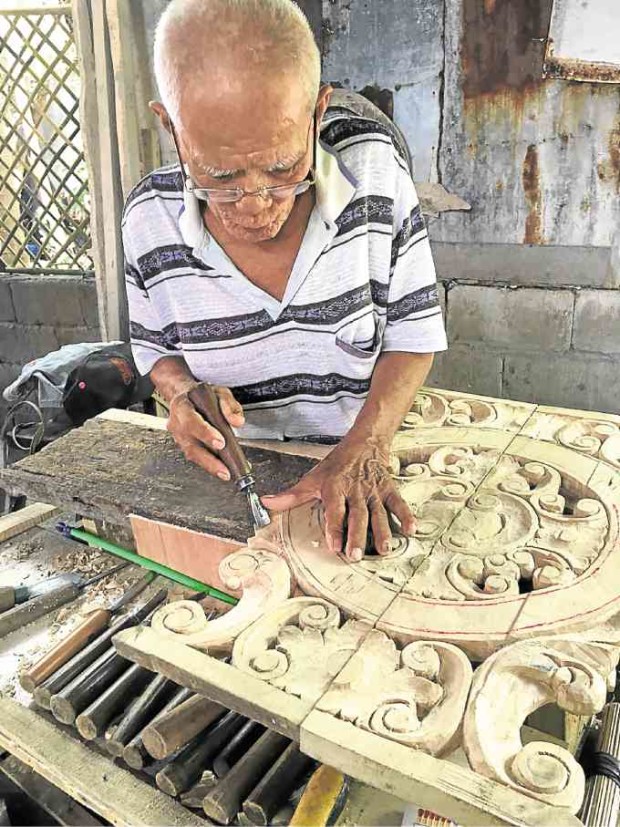Bits of Betis history and arts

In a corner of Layug’s workshop stands an image of Jesus Christ depicted in the Scourging at the Pillar. —ROBERT ABAÑO
Augustinians spread the early Catholic missions in the Philippines through Betis, one of Pampanga’s ancient settlements. Together with Lubao town in Pampanga and Calumpit town in Bulacan, Betis was a mission chapel of Sto. Niño de Tondo in 1572, just after the Spanish colonial troops defeated the “young leader of Macabebe” in the Battle of Bangkusay on May 31, 1571.
Muslim settlements along the river behind Betis slightly resisted and embraced Christianity. Betis’ patron is St. James the Apostle and St. James the Moor-slayer, which folk call Apung Tiago.
Residents consider these the major legacies of Betis: the church as a landmark of faith, its woodcraft industry, its priests and the Centro Catolico-culture that evolved and expressed in rituals, traditions and daily life.
Betis produced many priests and several papal awardees.
Scriptures in arts
Article continues after this advertisementDropping by the St. James the Apostle Parish would complete your visit of Sta. Ursula. The church, a national cultural treasure since 2001, is regarded as a testament to the artistry of Betis craftsmen.
Article continues after this advertisementGet immersed in visual catechism. The Bible is told through paintings and sculptures.
San Fernando Archbishop Emeritus Paciano Aniceto likened the Betis church to the Sistine Chapel in the Vatican City since most spaces in the crucifix-shaped, four-century-old structure are devoted to ecclesiastical art.
Done in refined Baroque style, the church is 50 meters long, 12 meters wide and 10 meters high. Its flooring made of hardwood survived lahar and floods.
The centerpiece of the church is a retablo, an assembly of wooden statues of St. James, the first apostle to be martyred, as well as St. Augustine and Augustinian saints.
Present are the two pillars of the Christian faith, Peter and Paul. The topmost niche is an image of God the Father, portrayed as an old man. Below is an image of Mary Help of Christians.
Fr. Jose de la Cruz led the construction of the Betis church from 1660 to 1770. The church has records of expenses in cargo y data (books of accounts). The details of repair, renovation and properties of the church were recorded in “Santa Visita de la Iglesia” and “Inventario de los Bienes” reports.
Who created the visual catechism of the Betis church is not known. Santa Visita reports showed that paintings and other artworks had been present in the church since 1790.
Source: Suli (Legacies of Santiago Apostol Church of Betis), 2012, by Caloocan Bishop Pablo Virgilio David and Nina L.B. Tomen


